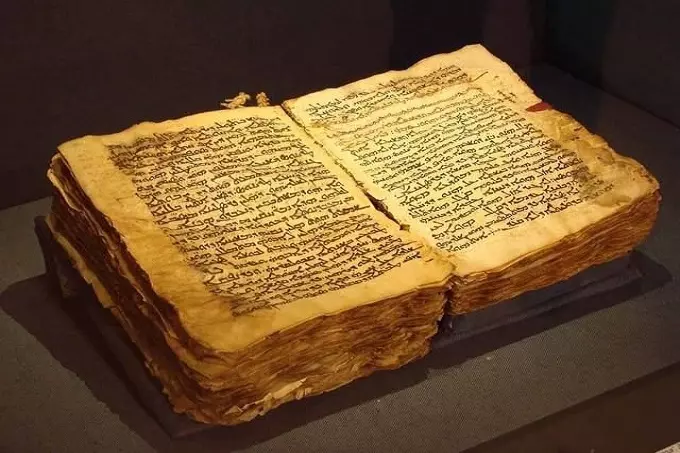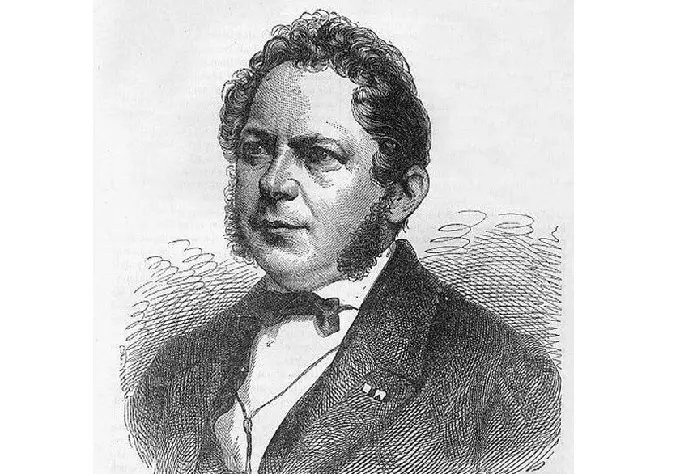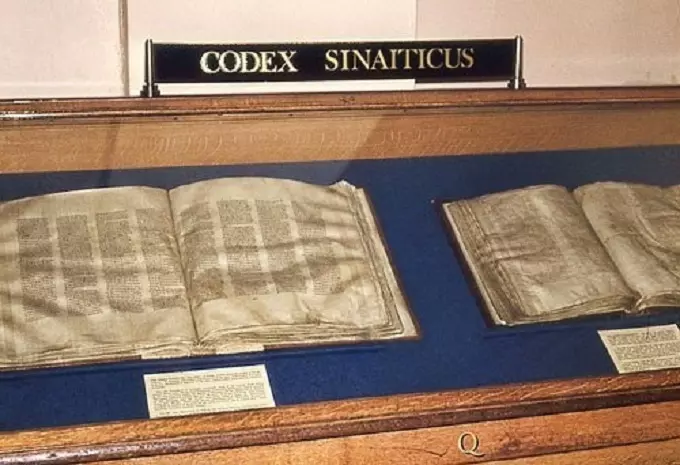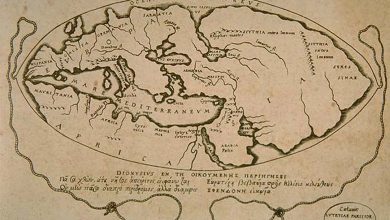Codex Sinaiticus

The story of Codex Sinaiticus began in May 1844, when a German scientist from Leipzig, Constantin von Tischendorf, reached the Sinai Peninsula after a 13-day journey by camel. He soon found himself in front of a granite rock ridge, where, according to the Bible, God appeared to the prophet Moses. It was at this biblical place and was the goal of Tischendorf journey – a real spiritual fortress, the monastery of St. Catherine, founded in 550 after the birth of Christ.
Even today, the brothers of the world’s oldest surviving monastic community live in their original form. For nearly a thousand and a half years, the bell has been calling them to morning service.
Barely alive after crossing the desert, Tischendorf was lifted by a Greek-Orthodox monk on a rope to the entrance of the monastery wall. What the scholar soon saw surpassed all expectations: Tischendorf found a pile of scattered parchment sheets in a large waste basket.
Later, on two more trips to Sinai, he would discover a total of 400 leaves from a folio containing the oldest complete text of the New Testament, which was compiled from the second half of the first century to the fourth century.
The texts discovered had been inked on ox-leather with brown or black ink made from the juice of Gallilian apples and soot. Greek letters solidly filled the sheets. The names of the psalms were highlighted in red ink.

The discovery of the Codex Sinaiticus was a world sensation. Tischendorf reported it to the pope. The Russian Emperor provided the scientist with funds for the work, which helped him to make his final trip to Sinai.
However, the ancient folio was scattered, and its sheets dispersed all over the world. Of these, 47 are now in Tischendorf’s homeland of Leipzig. 347 made their way to Russia, for the scholar persuaded the abbot of the monastery to present them to the Russian tsar, who knew how to be grateful.
The parchment sheets were taken to Russia, where they remained until 1869 in the Ministry of Foreign Affairs, and then were transferred to the state archive. The Sinai monks were sent 9,000 gold rubles. They wanted to get another small steamer, but they were refused. In Stalin’s time, the sheets were sold to London for the then enormous sum of £100,000. Twelve pages remain in possession of St. Catherine’s Convent.
Five pages of the Codex, still in the Russian National Library in St. Petersburg, have a special history. The Sinai monastery was visited twice, in 1845 and 1850, by Porfiry Uspensky, an expert in iconography from the Holy Synod. During his last visit, he received these five ancient parchments as a gift from the Orthodox monastic brothers. So far, no expert has been able to read the ancient text in its entirety.
This situation is likely to change in the near future. Scientists in the field of paleography and religious studies from several countries, including Germany, England and the United States, are involved in the overall project to restore the manuscript. Do not want to remain on the sidelines and the Sinai monks. The fact is that in 1975 during construction work in one of the monastery’s abandoned rooms, new sheets of the Codex were found, which are still inaccessible to researchers.
Scientists need to carefully study each leaf, examine its condition, the presence of remarks and conduct the necessary restoration.

In Germany, 200,000 euros have been allocated for this preparatory work, and it is already being actively carried out in Leipzig. London researchers plan to conduct a multispectral analysis of the sheets. They are interested in the mystery of the holes in the sheets for the binding. The folio certainly had a cover.
The story of the Codex of Sinai is steeped in legend. It belongs to one of the first books on earth. Many scholars believe it was created by the order of the Roman emperor Constantine, known as the patron saint of Christianity.
In 313, Constantine lifted all the prohibitions placed on the supporters of Jesus and began building churches. The distribution of the Bible was begun in the Roman Empire, a time when the Codex found at Sinai might have appeared.




